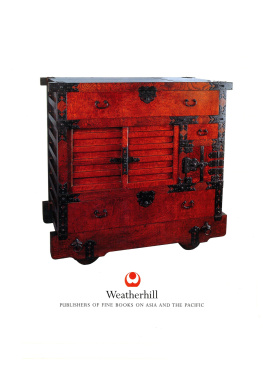Barbara Smit - The Heineken Story
Here you can read online Barbara Smit - The Heineken Story full text of the book (entire story) in english for free. Download pdf and epub, get meaning, cover and reviews about this ebook. year: 2014, publisher: Profile Books Ltd, genre: Detective and thriller. Description of the work, (preface) as well as reviews are available. Best literature library LitArk.com created for fans of good reading and offers a wide selection of genres:
Romance novel
Science fiction
Adventure
Detective
Science
History
Home and family
Prose
Art
Politics
Computer
Non-fiction
Religion
Business
Children
Humor
Choose a favorite category and find really read worthwhile books. Enjoy immersion in the world of imagination, feel the emotions of the characters or learn something new for yourself, make an fascinating discovery.
- Book:The Heineken Story
- Author:
- Publisher:Profile Books Ltd
- Genre:
- Year:2014
- Rating:3 / 5
- Favourites:Add to favourites
- Your mark:
- 60
- 1
- 2
- 3
- 4
- 5
The Heineken Story: summary, description and annotation
We offer to read an annotation, description, summary or preface (depends on what the author of the book "The Heineken Story" wrote himself). If you haven't found the necessary information about the book — write in the comments, we will try to find it.
The Heineken Story — read online for free the complete book (whole text) full work
Below is the text of the book, divided by pages. System saving the place of the last page read, allows you to conveniently read the book "The Heineken Story" online for free, without having to search again every time where you left off. Put a bookmark, and you can go to the page where you finished reading at any time.
Font size:
Interval:
Bookmark:
THE
HEINEKEN
Story
BARBARA SMIT is a journalist who has written about big businesses for the Financial Times, International Herald Tribune and others. This book builds on her unauthorised biography of Heineken published in 1996, which sold almost 70,000 copies in the Netherlands alone. She is also the author of Pitch Invasion: Adidas, Puma and the Making of Modern Sport, described by Metro as like Dynasty rewritten by Le Crre. She lives in France.
ALSO BY BARBARA SMIT
Pitch Invasion: Adidas, Puma and the Making of Modern Sport
THE REMARKABLY REFRESHING TALE OF THE BEER THAT CONQUERED THE WORLD
THE
HEINEKEN
Story

BARBARA SMIT


First published in Great Britain in 2014 by
PROFILE BOOKS LTD
3A Exmouth House
Pine Street
London EC1R 0JH
www.profilebooks.com
Copyright Barbara Smit, 2014
The moral right of the author has been asserted.
All rights reserved. Without limiting the rights under copyright reserved above, no part of this publication may be reproduced, stored or introduced into a retrieval system, or transmitted, in any form or by any means (electronic, mechanical, photocopying, recording or otherwise), without the prior written permission of both the copyright owner and the publisher of this book.
A CIP catalogue record for this book is available from the British Library.
eISBN 978 1 78283 113 6
Prologue
On a drab winters day several years ago, the head office of the Franzen Hey & Veltman (FHV) advertising agency just outside Amsterdam was in a state of unusual agitation. Two of the agencys directors, Giep Franzen and Tejo Hollander, were peering nervously out from the hallway through the drizzling rain, watching an unusual convoy glide up to the entrance.
At the back of the middle vehicle, a huge armoured Bentley, sat Alfred Freddy Heineken, the man who held the Heineken beer empire in his hands. His limousine was sandwiched between the heavy cars of the boys who accompanied the brewer ever since he had been kidnapped in 1983. The previous day three of them had thoroughly inspected the FHV building, searching the room where Freddy was to view two proposed adverts and even checking the projector for potential firing devices.
The team at FHV had prepared the forthcoming pitch down to the last detail. They didnt waste much time on introductory presentations because they knew that Freddy couldnt be bothered to listen to them. On the eve of such nerve-racking events, it was the guest list that topped the agenda. From experience, we knew that Freddy liked to make a show of his power by taking shocking decisions. And the bigger the audience, the more irrepressible the urge, one of them explained. So the trick was to keep the invitation list as short as possible.
Although many hard-boiled entrepreneurs walked through the agencys corridors, Freddys twice-yearly visits always made the ad-men jittery. They esteemed the mercurial tycoon highly for his instinct for advertising and his creativity. It never ceased to amaze us. Inevitably and instantly, he always picked the best lines, said Marlies Ponsioen, a former Heineken account manager at FHV. But Freddys disciples also knew that his unpredictable mood swings could be devastating.
Allan van Rijn, the man who directed FHVs Heineken adverts at the time, knew precisely how Freddy and his ad-men operated. He explained that in preparation for Freddys visits the receptionists all had their hair done, the mess was cleaned up and the managers wore their best three-piece suits. After all, their mortgages were at stake. Then Freddy stepped out of his limo with a crumpled suit and he walked straight through all this bullshit.
Freddy himself liked to recall that his legendary affinity with advertising was inspired by a school trip to the Philips lighting and electronics group in Eindhoven. They didnt sell light bulbs; they sold light, he explained. Since he returned from an eye-opening two-year traineeship in the United States in his early twenties, the grandson of Heinekens founder had meticulously constructed the brands identity so that it appealed to consumers throughout the world.
As planned, the diminutive tycoon arrived early in the afternoon. After a couple of handshakes in the hallway, he was ushered into the plain meeting room on the first floor of the FHV offices, which had a projector concealed behind a one-way mirror on one side and a screen on the other side.
As the lights went out and the curtains were drawn, all those present turned discreetly to Freddy Heineken and anxiously scrutinised the deep grooves in his bulldog-like face. The slightest tension on his lips, the merest hint of a frown even the way he puffed at his seemingly never-ending ultra-light cigarette could be an omen of a forthcoming disaster. After all, Heineken was one of the most avidly watched accounts in advertising, and Freddy ruled over it with the tyrannical edge that characterised his entire leadership.
Since he had regained his familys majority share in Heineken in his mid-twenties, Freddy ruled over an efficient brewing group that made a crisp lager. This he transformed into a brewing group with an unrivalled international scope, all the while keeping watch in an almost paranoid fashion over the sprawling business, and the brands reputation in particular.
Few outside the Netherlands realised that Heineken was the name not just of a beer but also of the uncrowned king of the Netherlands an extravagant yet utterly ordinary billionaire, who could be both irresistibly charming and outrageously vulgar. Reviled by some, he was hailed by others for turning a relatively bland beer into an iconic global brand.
Freddy had a few strict rules for success. Only in the United Kingdom did Heineken deviate from its recipe in more ways than one. Yet even there Freddy Heineken was much lauded for supporting a whimsical advertising campaign that became iconic and placed Heineken at the forefront of the Lager Revolution.
FHV and Heinekens advertising staff had spent about three months and 1.2 million guilders on the commercials to be screened by the magnate. Replicating an earlier concept, they consisted of short, fast-cut film fragments accompanied with fitting soundbites for instance, there was a glass of beer that whooshed across a bar to the sound of a roaring engine.
Again, Mr Heineken? Franzen inquired gently when the reel stopped. Because normally, when Freddy liked the commercials, he smiled contentedly and asked to watch them again. But this time the chairman looked hideously under-whelmed. Not funny at all, he grumbled and that, in Heinekens vocabulary, was tantamount to a death sentence. It was like a volcano erupting in our faces, said one of the participants. There was stunned silence. All of us turned white. We knew it would have been completely pointless to protest.
The shocked ad-men only found out several weeks later what it was that had offended Freddy: a short sequence with two dogs smooching under bar stools. It was meant to be a little edgy, but in retrospect even the director acknowledged that Heineken had been right. Before the presentation Freddy had probably had a drink in a bar in Amsterdam with Joe Bloggs, said Van Rijn. He knew the guy who handled the projector at the agency even better than the directors. That way he could tell, without fail, how the general public would react. As often in such cases, the dust quickly settled. The shot with the drooling dogs was edited out, and the adverts were used. Again Freddy Heineken had got his way, and with the briefest of comments.
Next pageFont size:
Interval:
Bookmark:
Similar books «The Heineken Story»
Look at similar books to The Heineken Story. We have selected literature similar in name and meaning in the hope of providing readers with more options to find new, interesting, not yet read works.
Discussion, reviews of the book The Heineken Story and just readers' own opinions. Leave your comments, write what you think about the work, its meaning or the main characters. Specify what exactly you liked and what you didn't like, and why you think so.










